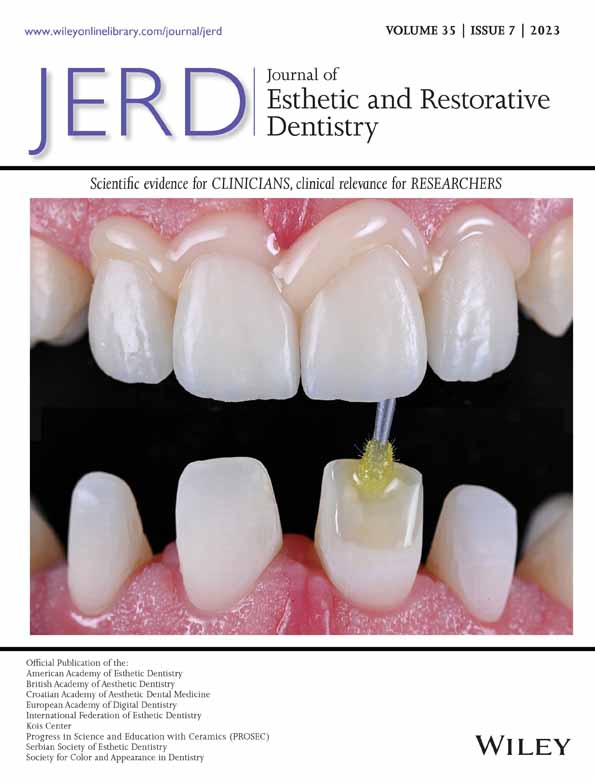Determining the periodontal phenotype—Probe transparency versus actual: A diagnostic study
Abstract
Aims
Assessment of the validity of the transparency of the periodontal probe as a tool for determining the periodontal phenotype.
Materials and Methods
The periodontal phenotype was assessed at the six upper anterior teeth of 75 subjects using two methods. One is through assessing the transparency of the periodontal probe upon insertion into the gingival sulcus. The second method was through the assessment and clustering of the width of keratinized gingiva clinically and the gingival and buccal plate thickness on Cone Beam Computed Tomography scan.
Results
The probe transparency approach correctly identified thick periodontal phenotype in most cases (41 out of 43 [95%]). However, this was not the case for thin periodontal phenotype; probe transparency approach identified 64% of the thin sites (261 out of 407) and misclassified nearly one third of the patients.
Conclusion
The probe transparency approach is a valid approach in identifying the phenotype in subjects with thick phenotype but not in subjects with thin phenotype.
Clinical Significance
The definition of periodontal phenotype has recently changed. Accurate designation has been shown to affect treatment outcomes especially esthetic ones in different disciplines of dentistry. Probe transparency is commonly used by clinicians and researchers. Assessment of the validity of this method based on the most recent definition and compared to actual assessment of bone and gingival thickness is of great clinical value.
Open Research
DATA AVAILABILITY STATEMENT
The data that support the findings of this study are available from the corresponding author upon reasonable request.




